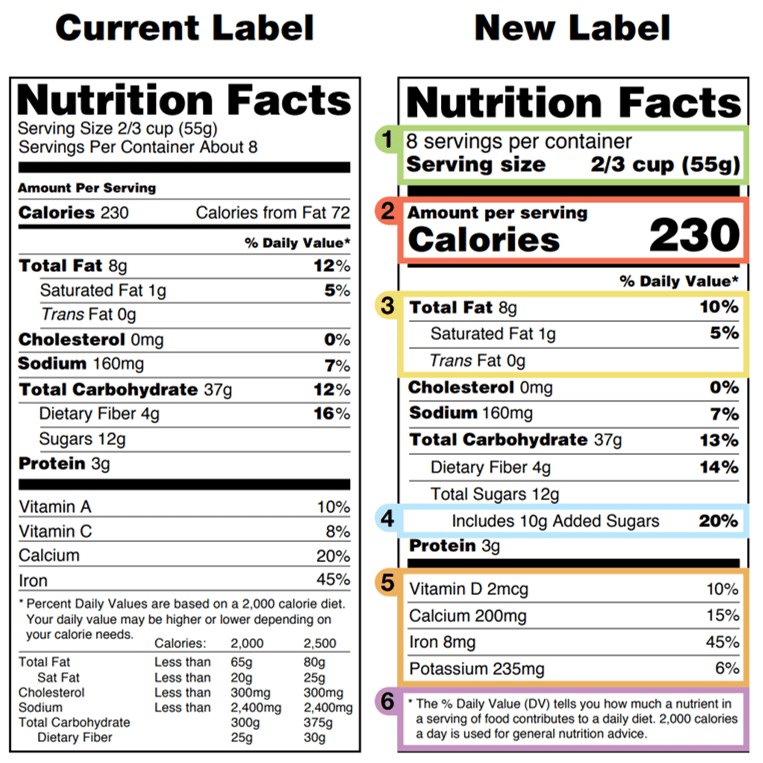The Food and Drug Administration (FDA) announced a new Nutrition Facts label for packaged goods to reflect new scientific information, including the link between diet and chronic diseases such as obesity and heart disease. The new label will make it easier for all consumers, including parents and nannies, to make better and more informed food choices for themselves and their children.
Key Changes
The new label makes it easier if you or a member of your family is counting calories by putting the calories, the number of servings, and the serving size in larger, bolder type.
Servings.
The number of “servings per container” and the “Serving Size” declarations have increased and are now in larger and/or bolder type. Serving sizes have been updated to reflect what people actually eat and drink today. For example, the serving size for ice cream was previously 1/2 cup and now is 2/3 cup. There are also new requirements for certain size packages, such as those that are between one and two servings or are larger than a single serving but could be consumed in one or multiple sittings.
Calories.
The “Calories” statement is now larger and bolder.
Fats.
The “Calories from Fat” information has been removed because research shows the type of fat consumed is more important than the amount.
Added Sugars.
“Added Sugars” amounts are shown in grams and as a percent Daily Value (%DV) and are now required on the label. Added sugars includes sugars that are either added during the processing of foods, or are packaged as such (e.g., a bag of table sugar), and also includes sugars from syrups and honey, and sugars from concentrated fruit or vegetable juices. Scientific data shows that it is difficult to meet nutrient needs while staying within calorie limits if you consume more than 10 percent of your total daily calories from added sugar.
Nutrients.
The lists of nutrients that are required or permitted on the label have been updated. Vitamin D and potassium are now required on the label because Americans do not always get the recommended amounts. Vitamins A and C are no longer required since deficiencies of these vitamins are rare today in the US population. The actual amount (in milligrams or micrograms) in addition to the %DV must be listed for vitamin D, calcium, iron, and potassium. The daily values for nutrients have also been updated based on newer scientific evidence. The daily values are reference amounts of nutrients to consume or not to exceed and are used to calculate the %DV.
Footnote.
The footnote at the bottom of the label has changed to better explain the meaning of %DV. The %DV helps you understand the nutrition information in the context of a total daily diet. The new label is already starting to appear on products nationwide.
Nannies can learn much more about child nutrition by enrolling in the Specialist Childcare program at the Nanny Institute.


Recent Comments